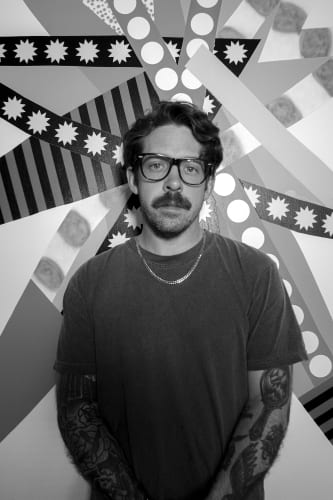Born and raised in Houston, Texas, currently lives and works in Los Angeles, California. Recently, Casella’s work was the subject of solo presentations at The Marfa Invitational with F2T gallery, Harper’s Chelsea, and Mindy Solomon Gallery, Miami. He has shown extensively within the United States and Europe, having been featured in solo and group shows in Los Angeles, Miami, New York City, Milan, and Seoul.
Casella’s work is a personal investigation and rearticulation of visual language. He is interested in our perception and the relationship we share with form and pattern, the influence color has on us, and the reality we perceive through coded visual languages.
His approach to painting an argot of non-representation, one that uses the familiar nature and starkness of color, shape, and pattern to express the inarticulable, both inherent and unknown. Casella’s recent introduction of photographic and depictive imagery in his syntactic visual language is a play on this approach, framing nonobjective structures with recognizable and seemingly familiar imagery as a way to introduce narrative and influence.
Through his codex of vivid colors, patterns, and deconstructed imagery we are offered insight into the artist's influences. We see hints of Pop Art, primarily Warhol and Lichtenstein, as well as the traditions of geometric painting of Stuart Davis, Frank Stella, and Peter Halley. Likewise, we see the influence of Rauschenberg and Ray Johnson in Casella’s use of photographic imagery, as he utilizes it as a form or visual signifier.
Casella recapitulates and reinterprets his own version of the pre-existing jargons that has influenced him by restating the vernacular of nonobjective painting with his unique hard-edged, cut-and-paste approach to painting-weaving influence and technique throughout his various bodies of work.
At the core of Casella’s practice is his ability for shape, color, and image acting in unison to hold us still while harnessing our focus in and out of the deliberations within the paintings. The work forces us through this syntax to read the surface and investigate the work corner to corner. There is a captivation that comes from his command of color and composition that pulls us through the work, allowing us to read and understand it almost telepathically.

